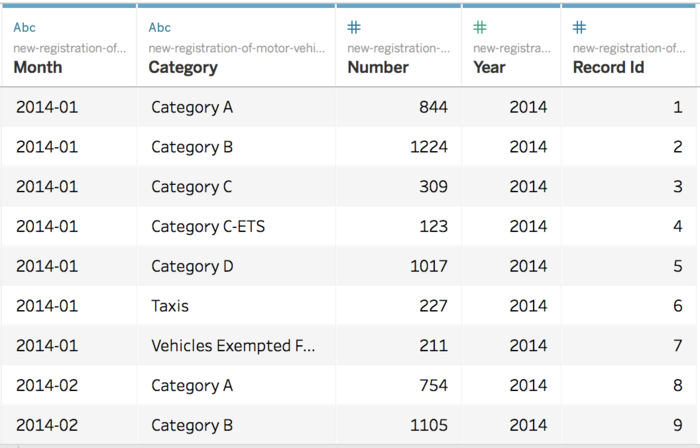ISSS608 2016-17 T1 Assign1 Wan Xulang
Contents
Abstract
Singapore, a modern but small city which has millions of long-term residents. To avoid problems in traffic like other modern cities have, Singapore’s government has built very strict laws to have a private car. In this assignment, we would like to know which kind of car is more acceptable by the government based the data of monthly new registration of motor vehicles. The dataset we’ll use contains two years’ record from 2014 to 2016 by month and the type of motor vehicles which is taken from: data.gov.sg
Problem
To buy a new car in Singapore, the very first thing you need to solve is the permission of registration but not which kind of car you would like to buy. In this assignment, we want to help people to solve this problem in terms of solving these problems:
- The trend of car’s registration in Singapore.
- The occupancy rates of different kinds of cars registered in Singapore at different time.
- Give recommendations based on time series analysis.
By solving these problems, we could know which kind of car is easier to be registered by government and the trend of them. In the end, we can give predictive recommendations to those who want to buy a car by time series analysis.
Approaches
Approaches Summary
Data Introduction
- Figures include weekend/off peak cars and tax exempted vehicles.
- Prior to Aug 2012, taxi operators can bid for a new COE or pay Prevailing Quota Premium (PQP) to register a taxi under Category A. The latter is only in the case of a new taxi that replaces a deregistered one within 6 months. From 6 Aug 2012 onwards, all taxis pay for COEs based on the PQP of Category A.
- Refers to the Early Turnover Scheme (ETS). Between 24 Apr 2013 and 30 Apr 2016, vehicle owners can de-register their existing diesel-propelled Category C vehicles that were registered before 1 Jan 2001 and register a replacement vehicle within 1 month of de-registration by paying a discounted Prevailing Quota Premium (PQP) under the ETS. From 1 Aug 2015, the ETS was extended to existing diesel-propelled Category C vehicles that were registered between 1 Jan 2001 and 30 Sep 2006 and will be de-registered between 1 Aug 2015 and 31 Jul 2017.
- Vehicles exempted from the VQS include scheduled and school buses, emergency vehicles, engineering plants primarily for off-the-road use, diplomatic vehicles and vehicles under the Disabled Person Scheme.
- Cars registered with COEs obtained from the Feb 2014 1st bidding exercise onwards:
- Category A: Cars up to 1600cc and 97kW.
- Category B: Cars above 1600cc or 97kW.
- Cars registered with COEs obtained before Feb 2014 bidding exercises:
- Category A: Cars up to 1600cc.
- Category B: Cars above 1600cc.
Data Preparation
Before visualize our dataset, we would like to do some preparations to it:
- Derive a new attribute “Year” from attribute “Month”.
- Give unique record ID to each record in the dataset.
The original data:
The prepared data:
Trend of Registrations
Firstly, we would like to know the trend of registrations by time from 2014 to 2016. In this step, we choose to use bar chart shown as below:
From this we can find that the number of registrations is keeping increasing from 4,000 to about 10,000 in these two years. Although, for some months, there are some drops, the number is actually increased in overall. Another thing we can notice is that the speed of increasing is quite different, before the August, 2015, the number is roiling in the area of 4,000 to 6,000 while after that time the number has increased sharply to more than 8,000 and keep in a high value to the end.
Viz Design: In this step, we are mainly focused on the trend of registrations. We’ve built a bar chart to show it. In the bar chart, we set the number of registrations in x-axis while the month in y-axis. At the same time, we set the year 2014, 2015 and 2016 as the color of each bar from light blue to deep blue to help people to see the different trend speeds of different time area.
Infographics
Tools Utilised
Tool used: Tableau

